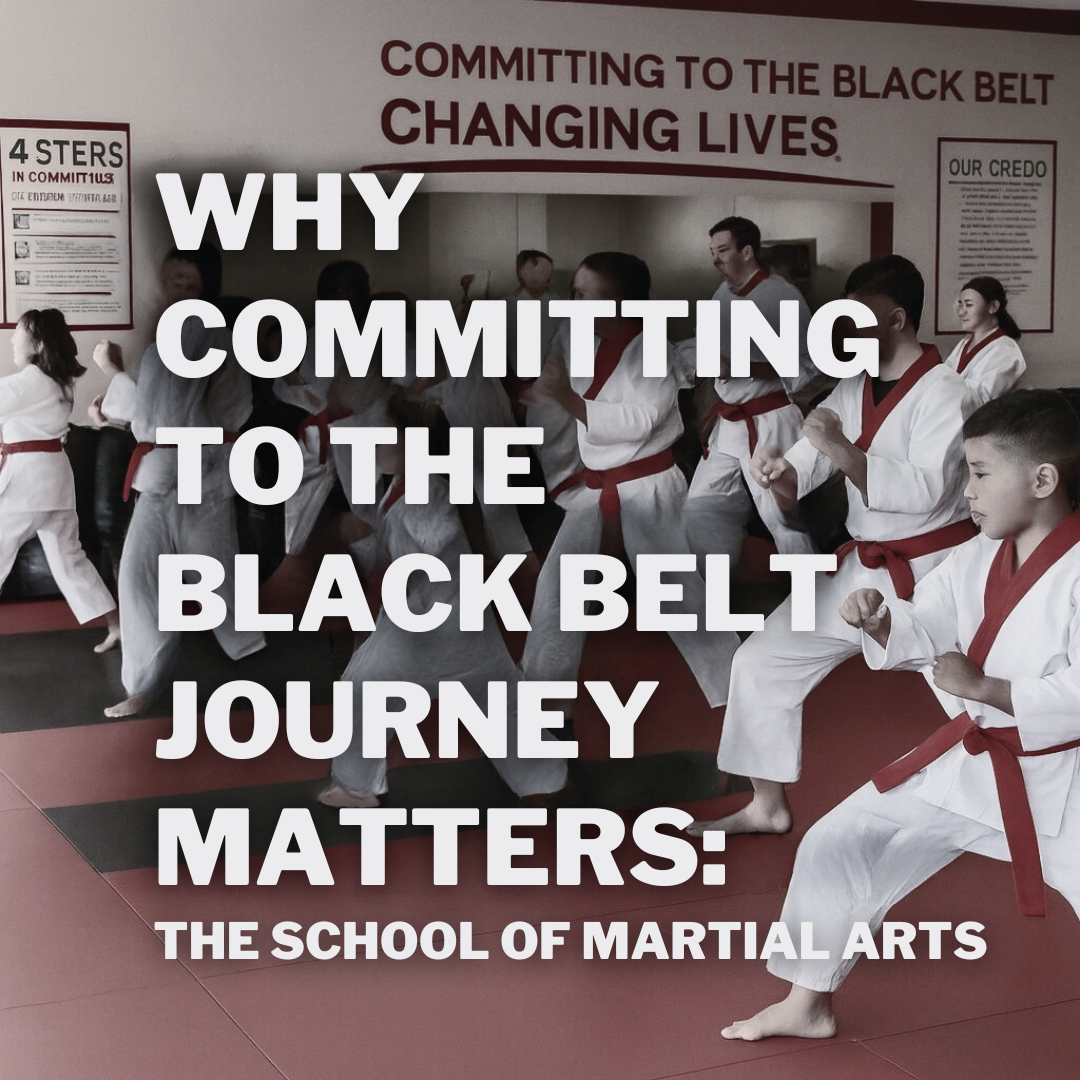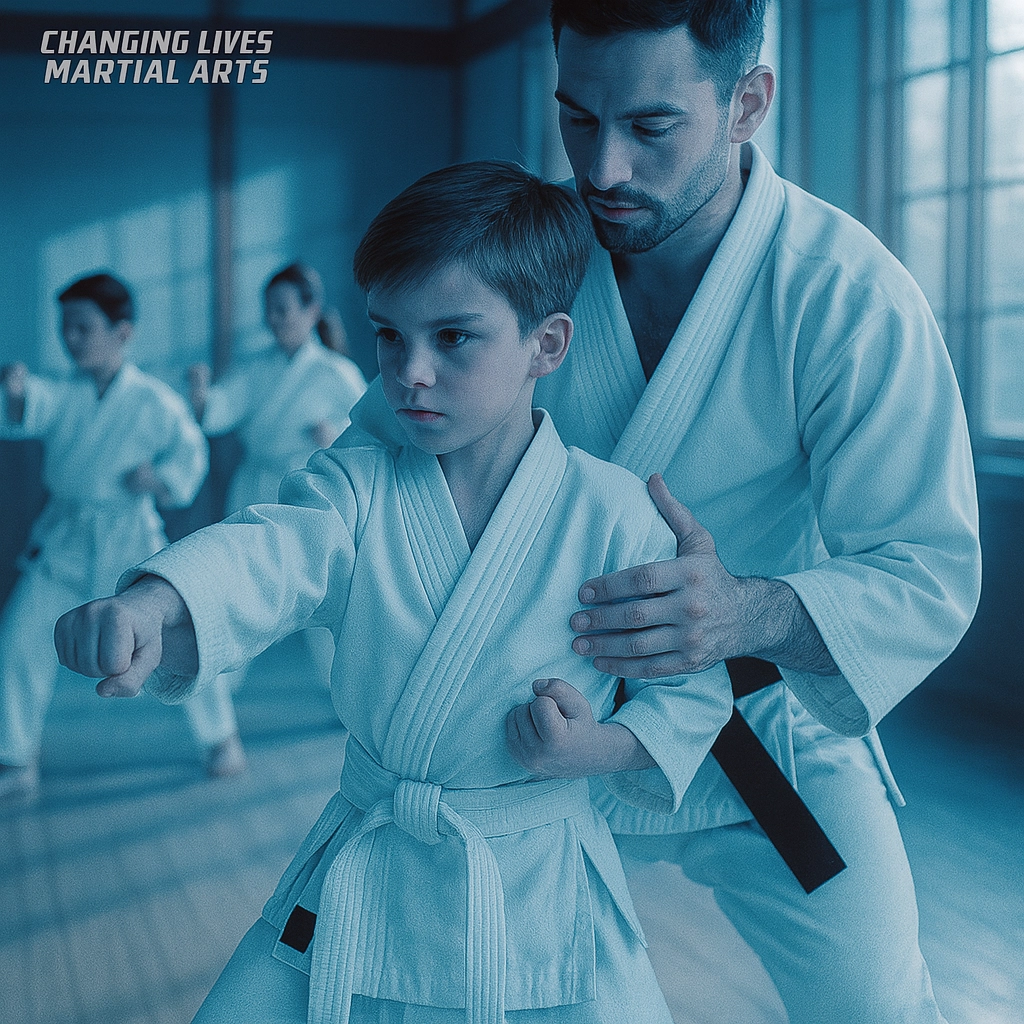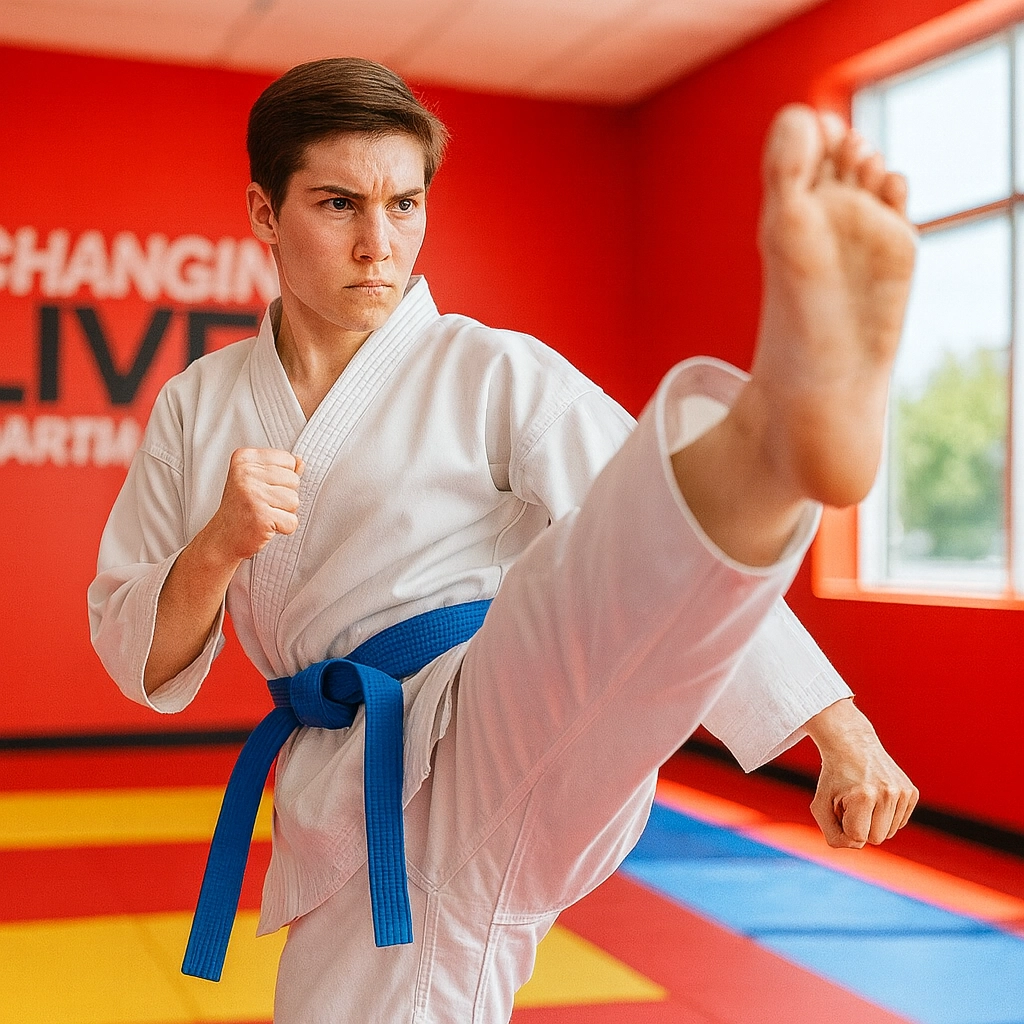
Why Committing to the Black Belt Journey Matters: The School of Martial Arts
The Martial Arts Education System: More Than Just Belts
Think about traditional education for a moment. Parents don’t enroll their children in kindergarten with the thought, “Well, we’ll see how the first couple of years go before deciding if high school is worth it.” The educational journey is understood as a comprehensive process with each grade building upon the last, ultimately leading to graduation and beyond.
Martial arts follows the exact same principle. At Changing Lives Martial Arts, our belt progression (white, orange, yellow, camouflage, green, purple, blue, brown, red, and finally black) represents a carefully designed curriculum where each level builds upon the knowledge and skills of the previous ones.
Just as you wouldn’t decide in 2nd grade that high school graduation isn’t worth pursuing, the same mindset should apply to martial arts training. By your second or third belt, your vision should extend all the way to black belt—and beyond.
White Belt: The Kindergarten of Martial Arts
Every martial artist begins with a white belt, symbolizing a blank slate ready to absorb knowledge. Like kindergarteners learning their ABCs and 123s, white belts focus on foundational movements, basic stances, and elementary techniques. These fundamentals may seem simple, but they form the critical building blocks for everything that follows.
During this stage, students aren’t expected to demonstrate mastery—just as we don’t expect kindergarteners to write essays. Instead, the emphasis is on exploration, building comfort in the dojo environment, and developing basic motor skills and coordination.
The Elementary Years: Finding Your Rhythm
As students progress through orange and yellow, and into their camouflage belts, they begin developing more complex skills and deeper understanding—similar to elementary school years where reading, writing, and arithmetic become more sophisticated.
During these formative belt levels, students start to:
- Develop proper technique execution
- Build physical conditioning and flexibility
- Understand the “why” behind movements
- Begin light sparring and partner work
- Learn basic self-defense applications
This is also the critical period where commitment becomes essential. Just as parents wouldn’t tell their third-grader, “Well, if you’re not enjoying math, you can just drop out of school,” we shouldn’t allow young martial artists to abandon their journey at the first sign of challenge.
By the time a student reaches their yellow or camouflage belt (our equivalent of 2nd or 3rd grade), they should be developing a vision that extends all the way to black belt. This long-term perspective transforms each class from an isolated activity into a meaningful step in a larger journey.
Middle School Years: Developing Depth and Character
The camouflage, green and purple, and into blue belt levels represent our “middle school” phase—where students face increased challenges, more complex techniques, and deeper character development. During these intermediate ranks, training becomes more physically and mentally demanding.
Similar to how middle school introduces more specialized subjects and increased academic expectations, these belt levels introduce:
- More intricate combinations and sequences
- Advanced footwork and positioning
- Strategic thinking during sparring
- Leadership responsibilities and assisting lower belts
- Character development through perseverance
This is often where many students face their first significant hurdles. Techniques become more nuanced, physical demands increase, and progress may seem slower. Just like middle school can be challenging for many children as they navigate increasing academic rigor and social complexity, these intermediate belt levels test a martial artist’s resolve.
The High School Years: Refining and Preparing
Blue, brown and red belts represent our “high school” phase—where refinement, deeper understanding, and preparation for black belt evaluation take center stage. Students at these advanced ranks are expected to demonstrate not just technical proficiency but also emotional maturity, leadership qualities, and the ability to embody martial arts principles both inside and outside the dojo.
These students are preparing for their “graduation” to black belt by:
- Mastering advanced techniques with precision
- Developing teaching abilities
- Demonstrating leadership and mentorship
- Showing mental fortitude under pressure
- Embodying the core values of respect, discipline, and perseverance
Just as high school students prepare for graduation and the next chapter of their lives, these advanced belt levels prepare martial artists for the significant milestone of black belt testing—a comprehensive examination of their physical abilities, mental fortitude, and character development.
Black Belt: Not the End, But the Beginning
Here’s where our educational analogy takes an important turn. While high school graduation often represents the completion of a foundational education, earning a black belt is more akin to receiving your high school diploma and then realizing: “Now I can finally start using all these tools I’ve acquired.”
A black belt isn’t the finish line—it’s the starting line for true mastery.
Consider this: in traditional martial arts, black belt is actually considered the first “serious” rank. The previous belts were merely preparation—building the foundation, developing the proper mindset, and acquiring the basic skills needed to begin true learning.
This perspective shift is crucial. Once you earn your black belt, you’ve proven you have the necessary tools, discipline, and character to begin the real journey of mastery. The subsequent degrees of black belt (2nd degree, 3rd degree, and beyond) represent continuing education and specialization—similar to undergraduate, graduate, and doctoral studies.
Why Early Commitment Matters
Understanding martial arts training as a comprehensive educational system explains why early commitment to reaching black belt is so important:
- It frames challenges properly: Just as students understand that difficult subjects in school are part of the journey rather than reasons to quit, martial arts challenges become growth opportunities rather than obstacles.
- It builds perseverance: Committing to a multi-year journey develops the mental fortitude to stick with difficult endeavors—a life skill that transfers to education, career, relationships, and personal goals.
- It allows for deeper learning: When students know they’re in for the long haul, they focus less on rushing through belts and more on absorbing lessons fully.
- It creates mentors and role models: Students who commit to the full journey eventually become the senior students who inspire and guide beginners, creating a self-sustaining community of growth.
- It provides a complete character education: The full journey from white to black belt is carefully designed to develop not just physical skills but also character attributes like respect, discipline, confidence, and resilience.
The Rewards of Going All the Way
At Changing Lives Martial Arts, we’ve witnessed countless transformations in students who committed to the full journey to black belt and beyond. Parents regularly share stories of improved focus in school, increased confidence in social situations, better self-discipline with homework and chores, and the development of leadership qualities that colleges and employers value highly.
Adult students report similar benefits—from improved fitness and stress management to greater confidence in professional settings and enhanced ability to persevere through challenges in all areas of life.
Most importantly, those who achieve black belt gain something priceless: the proven knowledge that they can set ambitious, long-term goals and achieve them through consistent effort. This self-knowledge becomes a foundation for success in everything they pursue thereafter.
Make the Commitment Today
If you or your child is early in the martial arts journey—still in the “elementary” or “middle school” phase of training—now is the perfect time to shift your perspective from “trying martial arts” to “becoming a black belt.”
This mental shift alone can transform the training experience from a series of classes into a meaningful journey of growth and self-improvement. By committing to the full educational path that martial arts offers, you open the door to all the physical, mental, and character benefits that come with complete training.
Remember, you wouldn’t abandon traditional education after elementary school—the most valuable lessons often come in the later years. The same is true in martial arts. The most profound growth and the most valuable skills develop as you approach and ultimately earn your black belt.
And when you finally tie that black belt around your waist, you’ll understand what all black belts eventually learn: this isn’t the end of your martial arts education—it’s just the beginning.
Ready to commit to your black belt journey? Contact us today to learn more about our programs and how we can help you or your child achieve this transformative goal.

